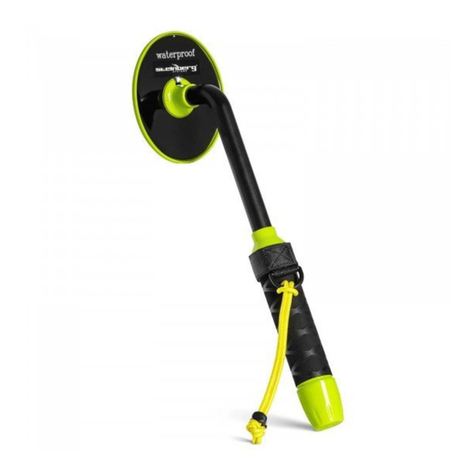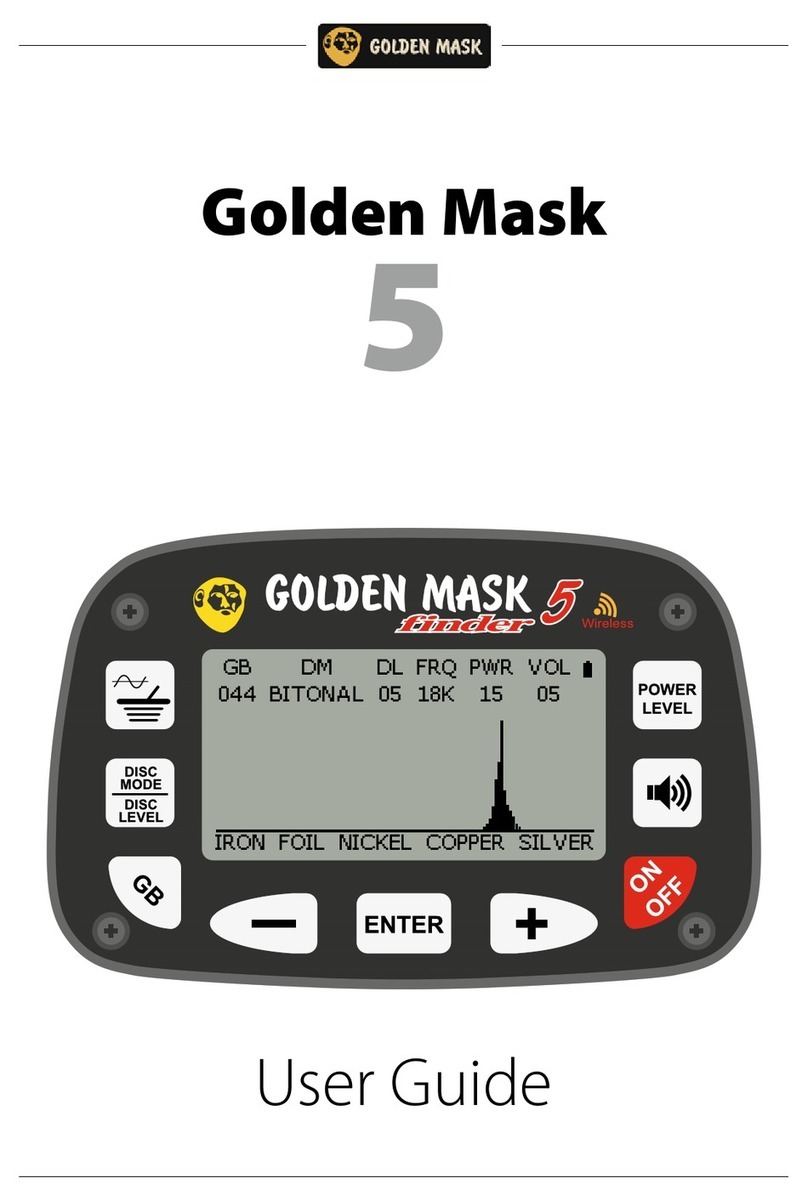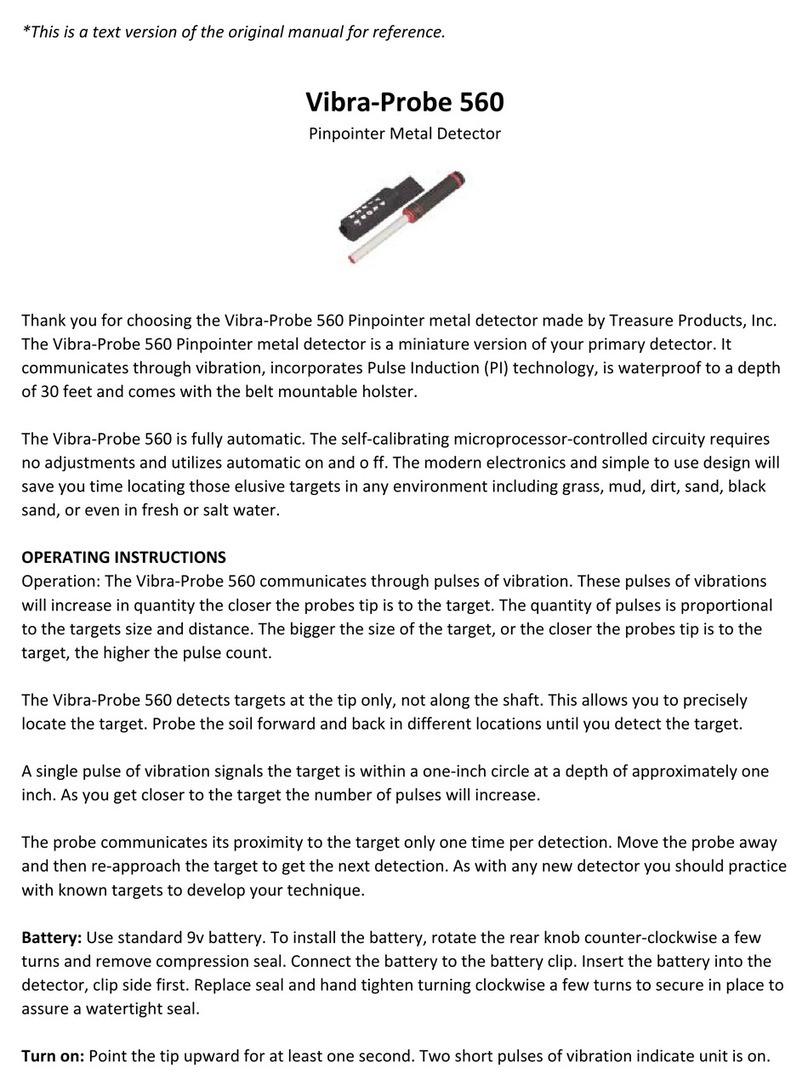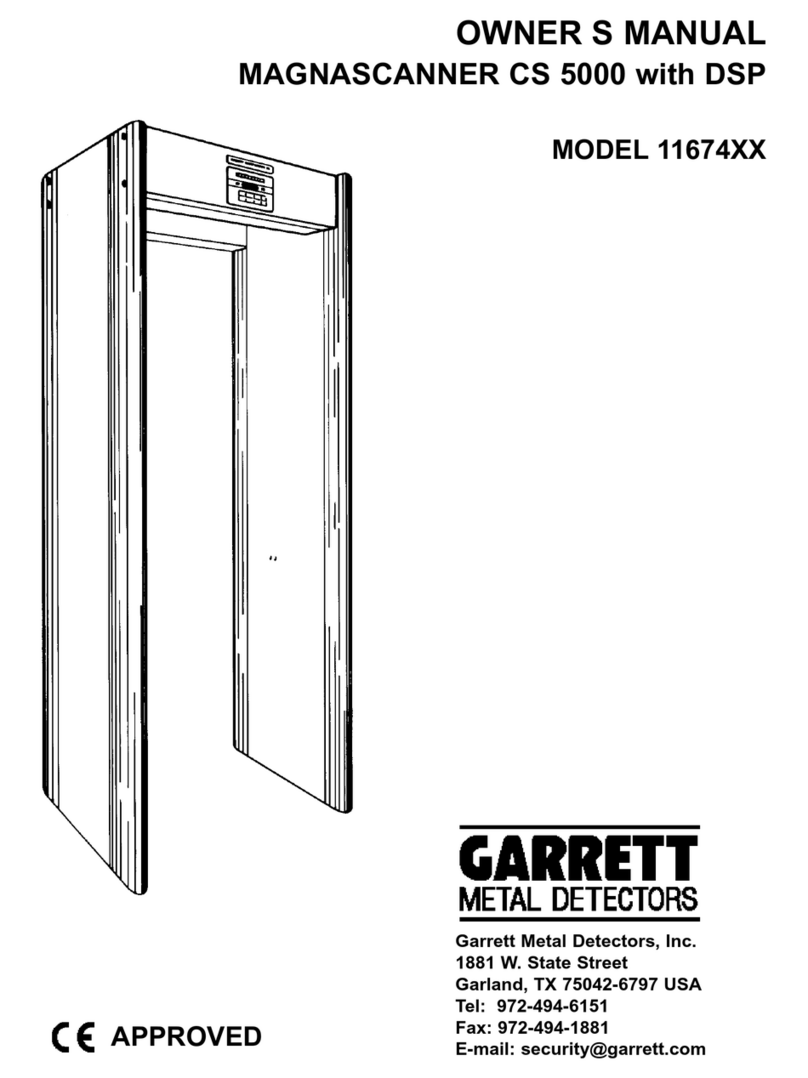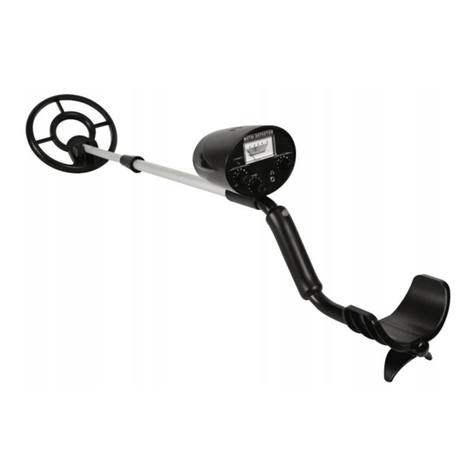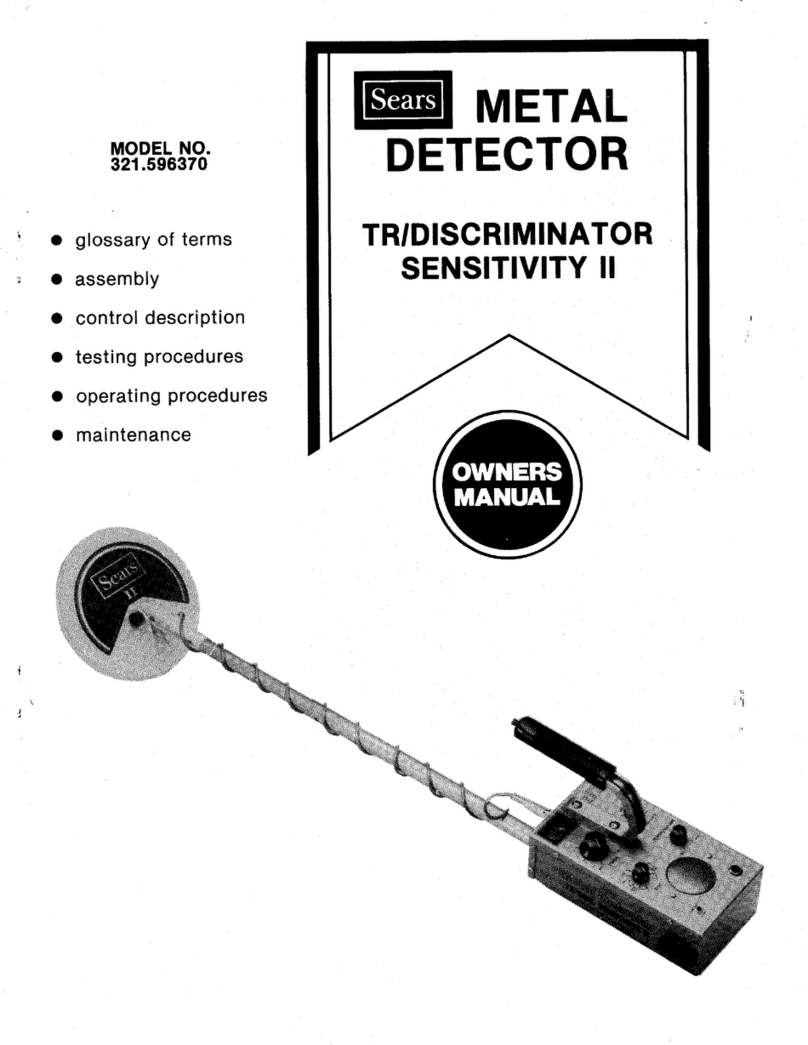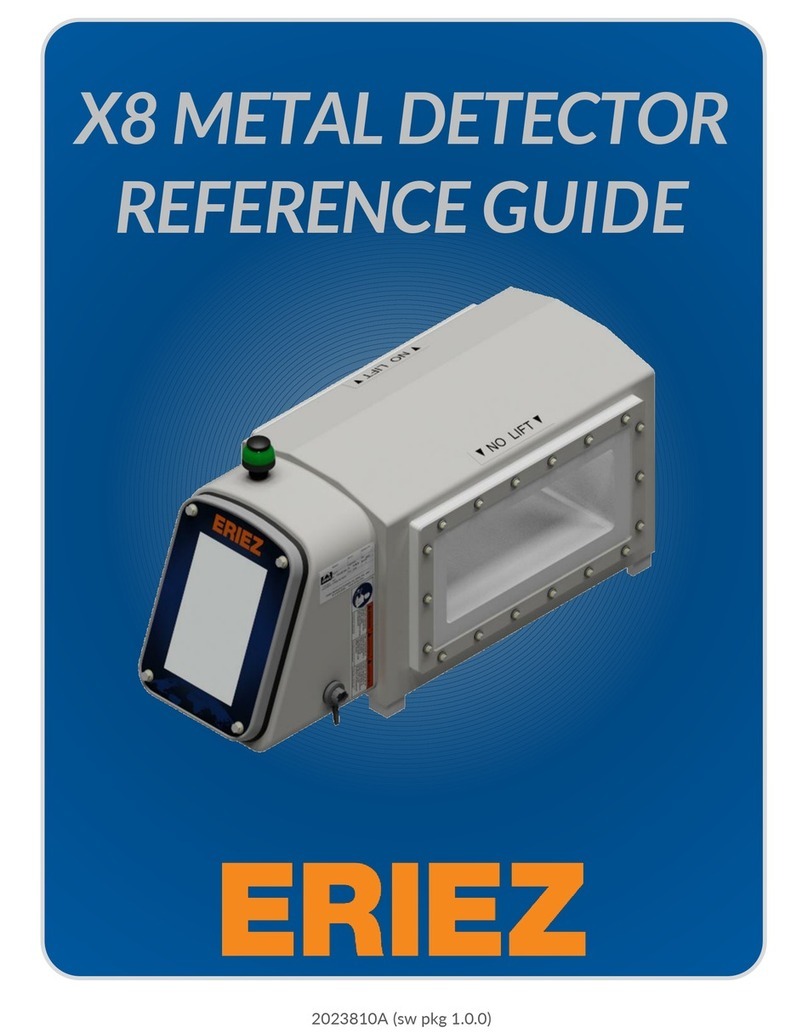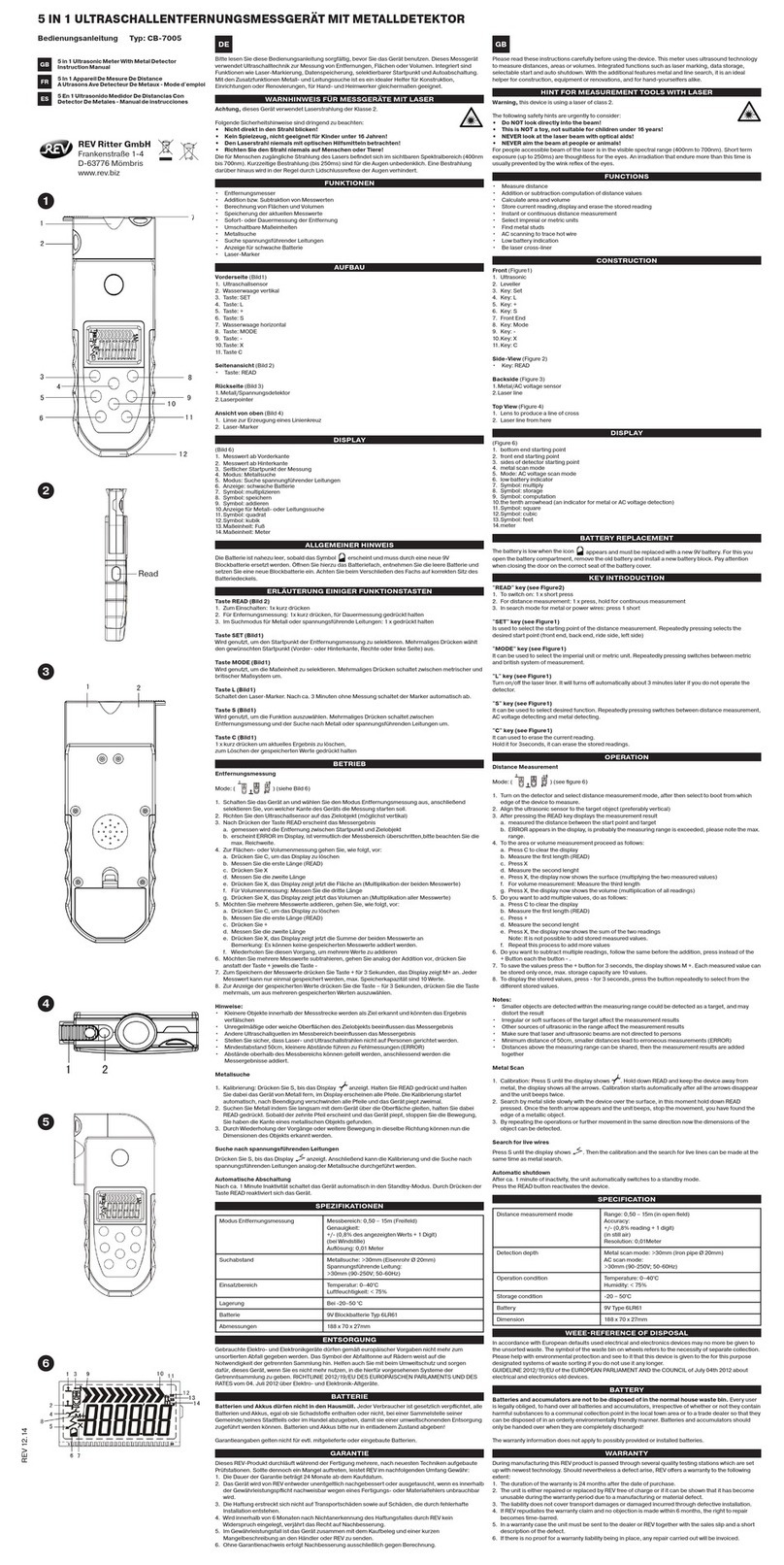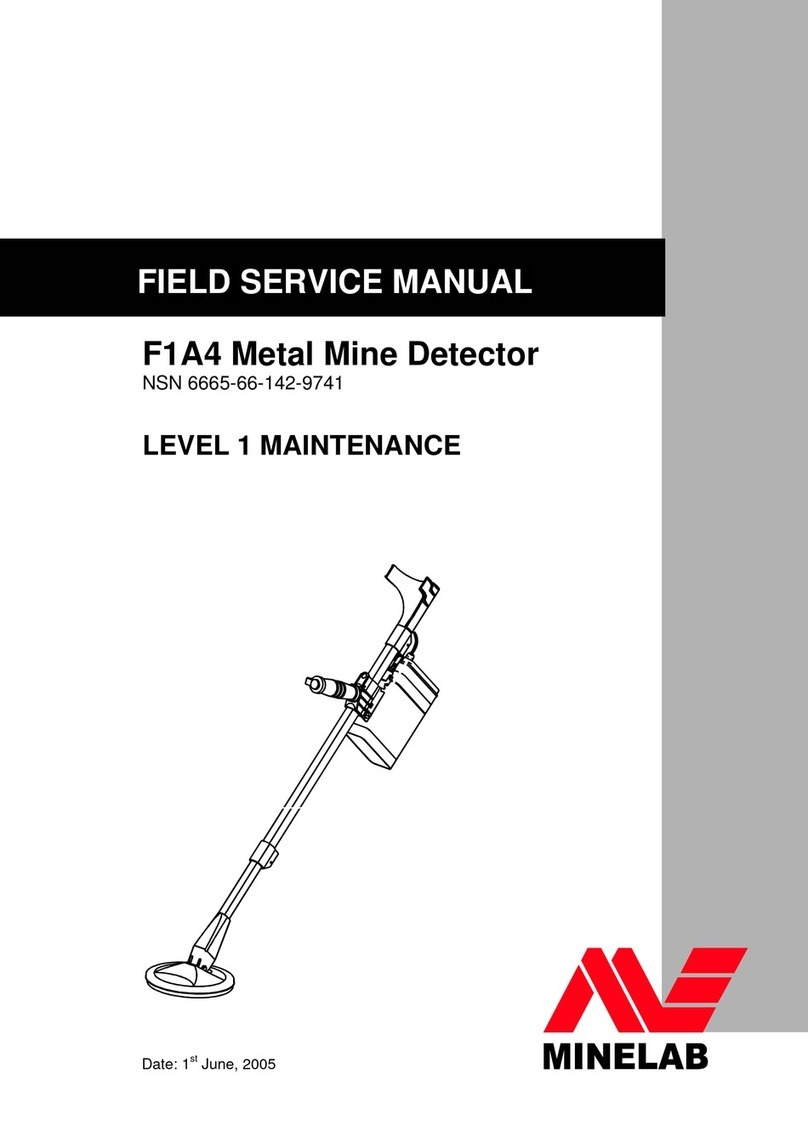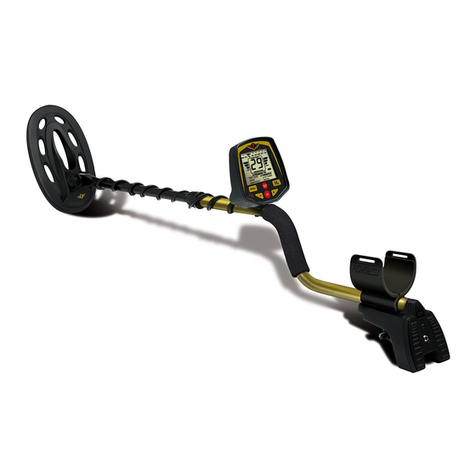automatic ground balance. Rotate the control knob slowly
clockwise to eliminate different trash objects. Rotate the control
knob counter-clockwise towards the end to get to ALL METAL
mode. The ALL METAL mode also comes with automatic ground
balance. This mode used to find not only ferrous metals, but also
non-ferrous metals (see more details below).
b. SENS – Rotate the control knob counter-clockwise towards the
end to power the metal detector off. Rotate the control knob
clockwise to power the metal detector on. Continue rotating it
clockwise to get higher sensitivity.
c. VOLUME – Rotate the control knob clockwise to increase the
volume or rotate it counter clockwise to decrease the volume.
d. LOW BAT – Low battery indicator. When the LOW BAT indicator
lights up, replace the batteries at once.
e. EAR – 3.5 mm headphones jack.
f. METER – When the metal detector finds any metal target, the
meter pointer swings to the right.
TESTING AND USING THE METAL DETECTOR
This metal detector has two operating modes: ALL METAL AND
DISC.
ALL METAL – Use this mode to find all types of metals.
DISC – Use this mode to discriminate the metal type.
Set the operating mode to ALL METAL, DISC all the way
counter-clockwise, and SENS to the high position. Hold the search
coil parallel above the ground, about 0.5 to 2 inches (1 to 5 cm)
